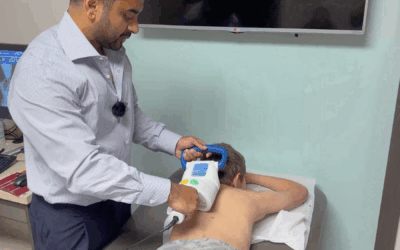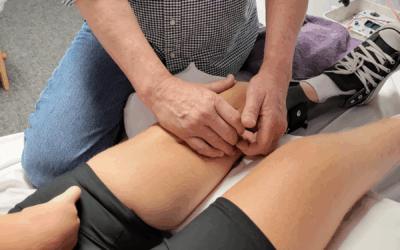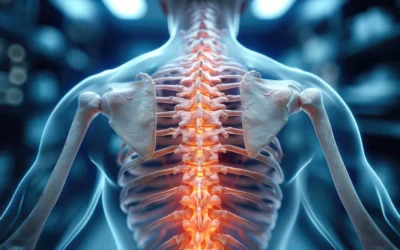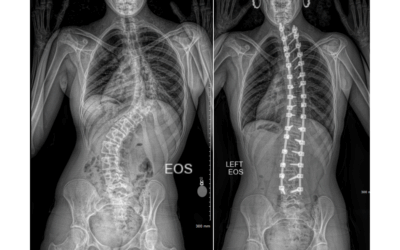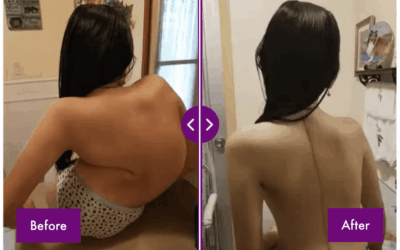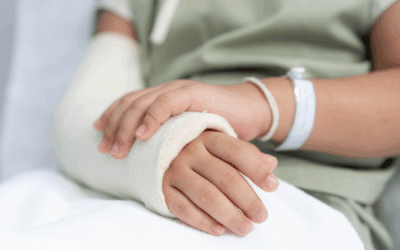News & More
From the Blog
Inside the Clinic: How MAGEC Rod Lengthening Works
At our practice, we’re proud to offer advanced, minimally invasive treatments for children with...
Arthrogryposis: Treatment Options and Goals for Improving Mobility
Receiving a diagnosis of Arthrogryposis Multiplex Congenita (AMC), often simply called...
Vertebral Body Tethering (VBT) for Scoliosis: A Motion-Preserving Alternative to Fusion
Watching your child grow up healthy and strong is every parent’s wish. So, when a diagnosis of...
Prader-Willi Syndrome and Associated Spine Issues
Prader-Willi Syndrome (PWS) is a rare genetic disorder that affects many aspects of a child’s...
SMA, Muscular Dystrophy, and Osteogenesis Imperfecta – Spine Care, Orthopedic Interventions, and Long-Term Support
Some of the most challenging conditions in pediatric orthopedics are those intertwined with...
Skeletal Dysplasia – Specialized Orthopedic Management of Rare Bone Growth Disorders
“Skeletal dysplasia” refers to a large group of rare genetic disorders that affect the development...
General Pediatric Orthopedic Conditions: Fractures, Injuries, and Growth-Related Issues – A Comprehensive Guide for Parents
Children are naturally active and resilient, but they’re not just “small adults” when it comes to...
Understanding Scoliosis in Children: Early Signs, Diagnosis, and Treatment Options
Scoliosis is a common spinal condition that affects children and adolescents, causing an abnormal...
The Importance of a Strong Surgical Team in Orthopedic Recovery
Undergoing orthopedic surgery is a major event in a patient’s life, and successful recovery...
Understanding Pediatric Hip Dysplasia: Causes, Symptoms, and Treatment Options
Hip health is essential for a child’s mobility and overall development. Pediatric Hip Dysplasia,...
Common Questions About Pediatric Orthopedics
What is scoliosis and how is it treated in children?
Scoliosis is a curvature of the spine that can occur in children. Treatment options vary based on severity and may include observation, bracing, or surgery.
How can I tell if my child has hip dysplasia?
Signs of hip dysplasia include uneven leg lengths or limited range of motion. Early detection is crucial for effective treatment, often involving bracing or surgery.
What are the signs of a pediatric fracture?
Common signs include swelling, pain, and inability to move the affected limb. An X-ray is typically required for diagnosis and treatment may involve casting or surgery.
How often should my child see an orthopedic specialist?
Regular check-ups are recommended if your child has a known condition. Otherwise, consult a specialist if you notice any unusual symptoms or injuries.
What is the recovery time for pediatric orthopedic surgery?
Recovery time varies depending on the procedure and the child’s overall health. Your surgeon will provide a detailed recovery plan tailored to your child’s needs.
Are there non-surgical treatments for spine conditions?
Yes, non-surgical options such as physical therapy, bracing, and lifestyle modifications are available and often recommended for less severe conditions.
How can I help my child manage pain after a fracture?
Pain management may include prescribed medications, rest, and ice application. Follow your doctor’s instructions closely for optimal recovery.
What should I do if my child complains of back pain?
Consult a pediatric orthopedic specialist to rule out any serious conditions. Early intervention can prevent complications and ensure proper treatment.
Is physical therapy necessary after treatment?
Physical therapy is often recommended to restore strength and mobility. It plays a crucial role in the rehabilitation process after treatment.
Schedule Your Child's Orthopedic Consultation Today
Ensure your child receives the best care for their orthopedic needs. Contact our office to schedule an appointment with Dr. Arun Hariharan, a leading pediatric orthopedic surgeon in West Palm Beach. Whether it’s scoliosis, hip dysplasia, or fractures, we are here to provide expert care and guidance.



